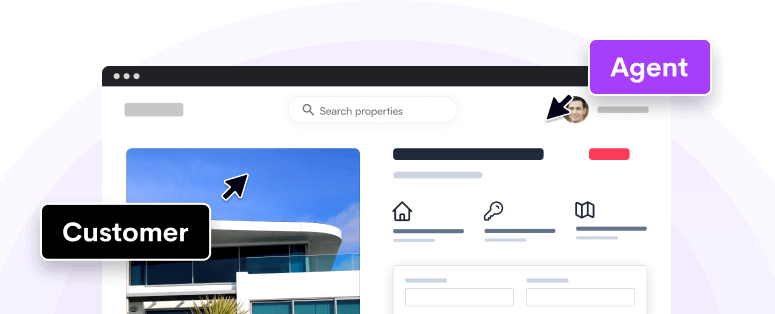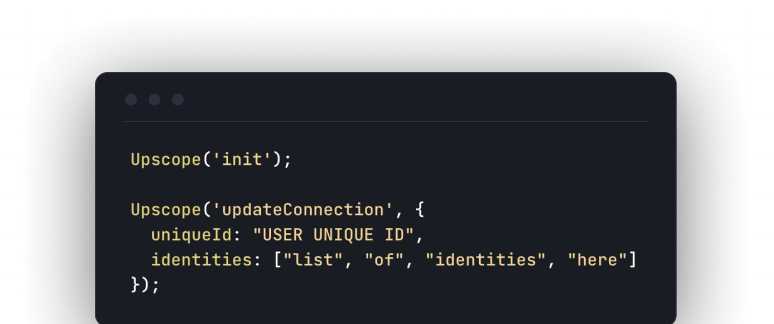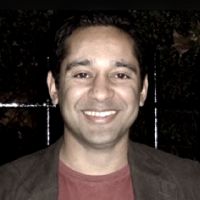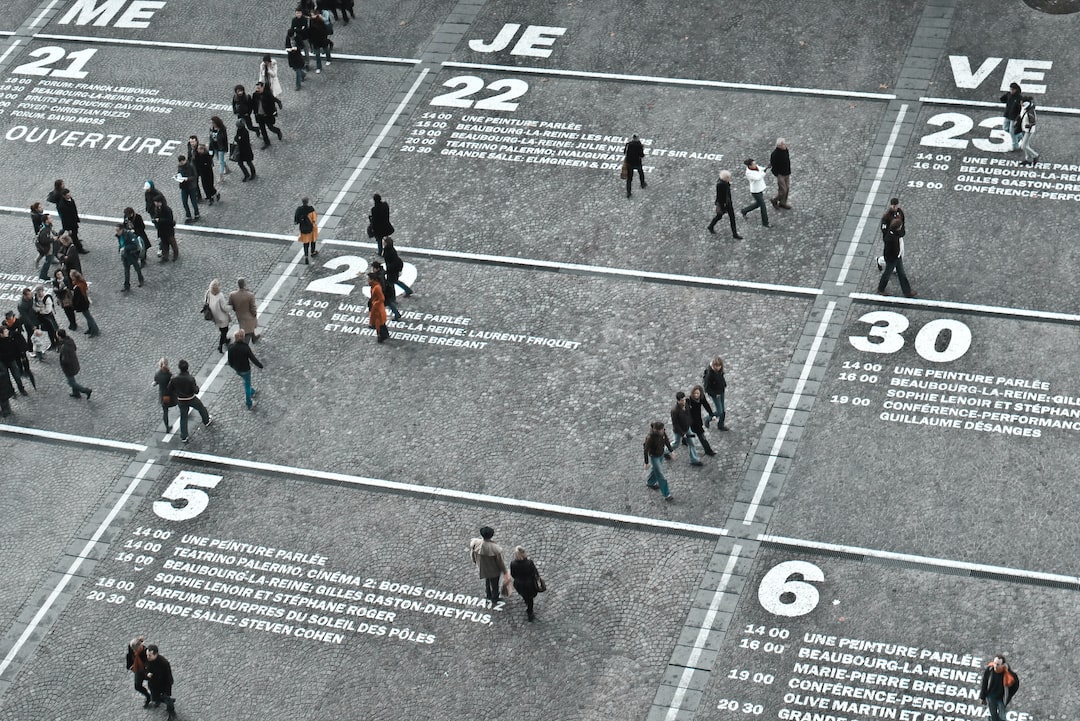Contents
Why have a customer experience (CX)
strategy.
What are the common elements of a customer experience
strategy.
How customer experience and positioning are a lethal
combination.
8 customer experience strategy case studies
Why have a customer experience (CX) strategy?
Because the whole is greater than the sum of the parts.
The customer journey is not the average of the individual customer touch
points.

If a company's onboarding is 10 steps all being given 90% marks, they probably
feel good but their customers didn't want to go through 10 onboarding
steps. Read more on Mckinsey's CX
discoveries.
A CX strategy makes sure you're getting the 'whole' right and not just the
giving yourself good marks for doing well on small controlled parts.
What are the common elements of a CX strategy?
You'll see a lot of CX definitions out there so we'll stick to the common
elements taken from Forrester
research.
You'll need:
-
A CX vision.
-
A customer description.
-
Gap analysis.
-
A road map.
-
An accountability outline.
-
KPIs.
You'll see some of these in the examples below but overall a CX strategy needs
a company wide vision, a road map of how to get there and execution
with support from the ground up to the very top.
CX and positioning combine to be a superpower
Some new fast growing companies are using the latest developments in product
positioning and combining it with unique onboarding experiences to create a
new standard of CX.
Superhuman.com is a perfect example.
They're now onboarding every single individual customer one by one, human to
human, for 30 minutes each and have a backlog of 180,000 customers to
onboard.
Madness?
It's happening and those people being onboarded become raving fans.
Why is this working?
Superhuman have positioned themselves as the "Fastest email experience
ever".
It's for heavy duty email users which is a far larger niche than I
imagined.
How does Superhuman's CX and positioning successfully fit together?
-
They say they are the fastest email experience ever.
-
They prove it by engineering from the ground up for speed.
-
During onboarding they teach every user how to use shortcuts for speed.
-
Every other feature they build then reinforces that core need for speed.
They've got raving fans and 180,000 heavy email users on their waiting list
and are a perfect example of how their positioning, messaging and onboarding
line up to promise and deliver on a great experience.
Positioning is now more of a science thanks to recent developments and
understanding this new science will change how companies are built.
Read more on Superhuman's market positioning along with 9 other
companies.
A US Airport had ground up and top down problems

They had a 15% increase in sales following execution of a customer experience
vision but first they had to understand the problem they had.
What management thought mattered to customers, did not.
Queuing was not as big a problem as how staff behaviour was perceived and
the staff themselves had problems with management's behaviour.
They used the compass model to get perspective on the situation
They used Disney's Compass model to understand customer perspectives by
interpreting their needs, emotions, stereotypes and wants.
Need (North): I need to transfer to an aircraft to begin an air-travel
journey
Emotions (East): I feel rushed and annoyed that this is so hard to deal
with. I’m anxious about getting to the gate and missing my flight. I really
need this trip to be behind me.
Stereotypes (South): Curb side will be a hassle. TSA lines will be long
and hard to predict. There will be no time to eat. And the airline may lose my
bag, so best to carry it onboard.
Want (West): I want a really positive end to my business trip that leaves
me feeling good, relaxed, and in a positive mind-set to go home.
It needed ground up work and they found problems on the ground
-
Management were told by empoyees “I will care about what you say when I
believe you care about me,”. -
Employees had no backstage area to step away from customers during breaks.
-
Lack of training outside of their own specific tasks.
-
Resented leaders who never seemed to care about feedback or input.
-
Staff walking through the airport avoided customers because they didn't know
how to help them if asked.
The customer experience vision
By including everyone, they came to the following shared aspiration:
"To delight and value each guest with the finest airport experience in the
world."
They broke this down to: Safety, comfort, ease, speed.
What needed to change?
Employees needed to know that management are serious about the change.
Frontline leaders needed to be involved in the change.
Everyone needed to see progress in the metrics and feel a part of it.
They organised around the four themes of safety, comfort, ease and speed.
Mixed teams worked to develop new ideas.
What did they do and what was the result?
New apps for navigation, new forms of entertainment, layout changes, curb side
valet, bag check at parking garages. They made sure to pick up trash, make eye
contact and smile, proactively offer to help. They had regular weekly
gatherings to reinforce and advance it. The CEO and staff were on the front
lines interacting with employees.
Result?
"Average retail spending per passenger at the airport is more than 15 percent
higher than the pre-transformation baseline"
Read more on Mckinsey's study of the
Airport
The simplest CX Win that gets you a Hug from your Customer Support Team
Customer support is tough.
But your support team is struggling more than they need to.
Give them the power to see through the customer's eyes and they'll thank you
forever.
Discover Upscope
KONE found the customer journey to be critical

This is quite an enjoyable read as building elevators is an industry most of
us know little about. It's reassuring to see they have the same problems we
all do.
Even KONE elevators have found customers to be more demanding at every level
wanting real time information and B2C type customer service.
They began by mapping the customer journey.
How did they understand the customer journey?
-
They focused on one specific business unit in France.
-
They picked a specific district.
-
They picked a specific set of customers.
-
They spoke to technicians and salespeople.
-
They spoke to housing and building managers.
-
They used the feedback to redesign the process around 9 moments of truth.
What they discovered and worked on
-
Some key participants, like housing-owners, were being completely
ignored. -
The first visit of the technicians with the customer was a critical
buy-in moment and part of the onboarding process. -
They saw that responsiveness was essential as customers wanted to see
what's happening in real time. -
They learned that building initiatives is best done in the field and not
in HQ.
As a result, they made KONE Care Online / KONE Mobile available globally so
customers know what is happening at all times.
The KONE CX program was expanded to the entire company not just one section,
they expanded it to R&D, sales, marketing and finance. They're all
participants now.
Read more about KONE's
journey
Gusto's incredible NPS of 75 by not caring about NPS

Gusto is a payroll and benefits service that has a nearly impossible NPS score
of 75. Consider that 30 is thought to be good and 70 is world class.
The weird thing?
They don't really believe in NPS and they're willing to be bad for some
customers.
Gusto believe in asking yourselves the following questions.
What is your customer experience strategy?
Gusto do not think NPS is a good way to manage your business as they believe
you can work hard, measure NPS or CSAT scores but still fail without that CX
strategy.
Gusto leadership point out that companies have go-to-market
strategies but go
blank when asked about CX strategies.
If your CX strategy is based on having better customer service (rather than
technology led with network effects) then you have to be clear on that and
have a framework for implementing it.
Below is Gusto's framework for implementing a CX strategy of listening, hiring
and engineering.
How do you execute it? Listen, hire, engineer.
Listen
Gusto publishes a monthly voice pack of the customer including qualitative and
quantitative metrics, published to the whole company.
At customer experience meetings "ask “Who in the room has talked to a
customer in the last week?” and if there’s nobody who has, cancel the meeting.
Get on the phone. Sell something or go service someone, but we shouldn’t be
having a meeting."
Hire
For Gusto, this is intellect, empathy, energy (because there is no manual for
this) and also diversity because they serve the world.
Engineer
Engineer for solutions.
"After you’ve listened to your customers and your teams that can provide
great feedback, engineer solutions.
We have a mantra. If get an issue 10 times, we don’t get it the 11th because
the product has been fixed."
Who are you willing to be bad for?
As an example, Southwest is 'Low cost excellence' - designed for the budget
traveler. When the random luxury traveller turns up and gives them a bad
score, they don't freak out. They celebrate it by saying their strategy is
working.
This is the classic case of focusing on good-fit customers and not trying to
please everyone and it seems Gusto also live by it, which is why they score
better.
That's why having management onboard with CX from the very top is essential,
otherwise ground level teams end up reacting to every bit of bad feedback
because of potential reprisals from disconnected management.
Read more and see the full video of Gusto achieving an NPS Score of
75
Avast fixed the broken things first

This is a good study of technology driven companies learning customer
experience thinking.
The problem they had
Avast, a cyber security company, acquired HMA (A VPN solution) which had
performance issues.
Typical to their industry, they were focused on technology first and ran
into the same problem their competitors had:
"All companies should understand their customers are more demanding,
impatient, informed and empowered than ever before"
The question that defined the strategy
To begin solving the problem, they were asked the question:
"‘What is the right strategic customer experience for your customers,
your ambitions, and to differentiate the brand versus your competitors’.
Gap analysis
They then compared the difference between the now and future state they wanted
and listed and prioritised activities to fill the gap they saw.
"We then compared the two states and identified the delta, allowing the
complete set of activities required to redress the difference. Next, we
ensured the activities were prioritised to provide rapid customer and company
benefit."
Changes were made in three phases
-
Fix obvious broken things.
-
Easy-to-do innovations.
-
Hard innovations such as personalisation.
Read more on the HMA case
study
Dell were once known for 'Dell Hell'

Dell is a huge company that went public, ran into problems, had its shares
bought back and made private again and now might go public again.
This was probably the most difficult company, in terms of researching their
customer experience strategy. There were many disjointed parts to pull
together and I'm still not sure I understand what it is. Maybe that says
something, maybe it doesn't.
They've had customer problems in the past
Dell have had their problems, for example they were part of the 'dell hell'
storm which spread
like fire.
A focus on the customer may also not have been in their DNA from the top down
as their own executives were saying that senior management rarely met
customers outside of a sales or marketing
environment.
This is how they're now learning more
"So we partner with people who are trying to purchase our products, whether
it's a large commercial customer, small business, or consumer, and we study
their experiences and interactions with Dell across the customer journey. Not
just what it's like to use a product or set it up, but literally what is it
like if they have to call our tech support."
They looked for trends in both quantitative and qualitative data to understand
where the problems were.
They get input from the following sources:
Social media. Twice a year NPS scores.
Commercial clients give feedback through sales and partners.
They recruit people who are target users.
Customer advisory councils.
How are they changing their customer experience?
They have appointed CX engineers and other CX related roles.
They discovered that lots of metrics and customer satisfaction scores for
individual touch points still does not mean everything is right. They found
they needed an overall qualitative understanding of the journey.
That involves a three-part
process:
-
Using data analytics to study customers and how to make them successful
-
Innovating customer expansion modality (I do not know what this means)
-
Acting as a “not-so-secret-shopper” where the engineer studies the complete
customer experience in order to understand it.
An interesting side note is that, certain at one point, their bonuses were
linked to the NPS
scores.
Also, they have a CX day where celebrate and raise
awareness of
professionals providing customer service.
Original page on study is not there but here is a podcast with Dell's lead on
CX.
Southwest's focus is on employees as number one

There are lot of
stories
about how Southwest airline employees went over and above to help customers
and that's why they're known for providing a great customer experience.
How do they do it?
This tells you everything. Herb Kelleher told his employees that they're in
the customer service business and it's incidental that they fly planes.
To achieve great customer service though, they focused on the employees first.
“If the employees come first, then they’re happy. A motivated employee treats
the customer well. The customer is happy so they keep coming back, which
pleases the shareholders.”
Hiring and employee satisfaction is number one
Their belief is that you can’t train employees to care so hire based on
overall attitude - candidates who will exude warmth, friendliness, individual
pride and company spirit BUT this has to be earned by the company by taking
care of them.
Hire for heart. Hiring by watching the other interviewees as the first tells
their most embarrassing story. They looked for:
-
a warrior spirit
-
a servant’s heart
-
a fun-loving attitude
They have weekly shoutouts to employees who demonstrate CX best practice.
There are internal videos highlighting best examples of empathetic engagement.
Kelleher acknowledged births, marriages and deaths by notes and cards.
Staff were encouraged to pitch in and help out, especially at check-in, giving
Southwest turnaround times less than half the industry average.”
Senior management set an example
Herb Kelleher was known to arrive at 3am to help clean out planes.
He often assisted with baggage unloading.
Storytelling to aid empathy
"We’re focused on telling customer-centric stories. In addition to talking
about our unique differentiators, we want to show customers why we do business
the way we do,”
See the twitter stream on their
storytelling and read about
the storytelling
philosophy.
Southwest score well compared to industry average
Six Pillar scores vs. industry average
-
Personalisation: +12%
-
Time and Effort: +9%
-
Expectations: +12%
-
Integrity: +12%
-
Resolution: +12%
-
Empathy: 11%
Read more on Southwest's customer experience
strategy.
Nordstrom

The very core of Nordstrom's customer strategy is around employees and
specifically giving employees freedom to treat customers the way they
like to be treated.
How are they structured
The organisational structure is an inverted pyramid so that sales and
support people are at the top and everyone is there to help them.
Senior execs learn about employees and customers ground up by working on the
shop floor when they start. They hire internally.
They don't brag about their customer service achievements. The attitude is
"There's always more to learn".
"Since each employee has wide discretion to take the initiative, talking to
an employee is just like working with the owner of a small business. They
can take the initiative and act without impediments to create added value for
the customer." The Nordstrom
Way
Here's how far their staff go
"My personal Nordstrom shopper (Joanne Hassis at the King of Prussia, PA
store, if you’re curious) makes a point of refunding the difference between
full price and the sale price for anything I loyally bought from her at full
price in the weeks leading up to the sale.*" Micah
Solomon
They're known for accepting obviously damaged goods from customers and still
refunding them.
New Nordstrom employees prioritise one rule above all others: “Use good
judgment in all situations.
Some of the ways they implement their standards in both physical and
online environments.
Any sales person can get products for a customer from across the department.
Staff can build personal relationships with customers as they see fit, which
is a bit like running their own company within a company.
They send marketing from an email address that can actually be replied to.
Employees respond authentically to customers on chat rather than following
scripts.
They've created detailed profiles for each customer including their style
preferences. There are apps so busy folks can contact stylists on the go.
Loyal customers who happen to be in-store are geolocated and given a
hyper-personalised experience.
Floor staff have mobiles and iPads to track inventory across the chain and
give accurate and up to date answers to queries.
Shoppers can buy items they see on Pinterest and Instagram with just a couple
of taps on their phones.
Read 10 keys to Nordstrum's digital
transformation
and a good summary of the Nordstrum
way.
8. Upscope trained super agents for a super CX

Director: "What if we train them and they leave?"
CEO: "What if we don't and they stay?"
At Upscope we've added something to that classic conversation.
"What if the largest customer experience win is better training for support
agents and it does not take as much time and resources as we imagine?"
We've never had so many great inexpensive tutorials online
Upscope is a very simple CX win for support teams
because it's next generation screen sharing, built for web. Therefore, many of
Upscope's own support requests can involve customers asking technical
questions during the initial set up.
When we gave our team members structured time and resources to educate
themselves on subjects like Javascript, they were able to answer many more
of technical questions themselves giving our tech team time to focus on the
more complicated requests.
We realised with Udemy, codeacademy and other resources, the best teachers
in the world have posted their teaching material online and, after some
initial guidance, support team members learned a lot on their own.
They felt better, more in control and more enthusiastic in answering
questions.
We created super agents which is a growing customer service
trend.
This resulted in fast accurate responses and happier team members
What did spending more time and effort on training do?
What difference does that make to customer experience AND for employee
satisfaction?
-
Even very technical questions are quickly answered by front line support
-
The customer is delighted that their complicated query was answered first
time -
Fewer low and mid level queries are passed to the tech team, so they can
focus on solving the harder problems faster -
Team members are more confident, happy and enthusiastic because they're
developing their skills and can see progress
What to consider when implementing something similar
-
The biggest initial problem in learning technical skills was knowing where
to start and what to ignore. We helped pick the right technical courses. -
We gave an overview of how the web works but after that, off they went.
-
Naturally, as a result of their day to day work doing support, they gained
confidence in answering queries. -
Occasionally we'd run a special class and everyone enjoyed it because the
tech guys love teaching and the other team members now love learning. (well,
unless the tech guys go too hardcore but that works itself out).
People want job security in a time of automation
People want to feel secure, feel valued, feel like they have developed a skill
set.
They are aware that computers are automating many jobs into oblivion. AI and
bots are pushing agents to handle some of the most complex
queries.
However, computers are currently bad at automating some simple physical tasks
and they are also bad at automatically understanding and replying to complex
cross functional requests.
We realised we need to raise expectations on what all team members are capable
of by themselves.
We want to give them time to learn.
Expect them to be better.
No matter who it is.
The opportunity that sites like Udemy provides is
unprecedented.
Here's a breakdown of how our customer success manager learned to
code.






